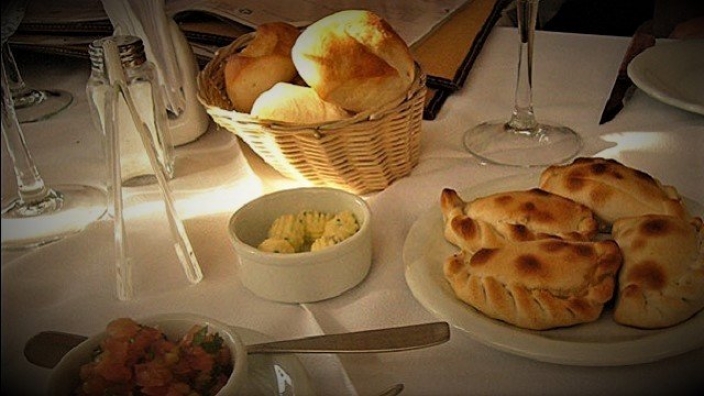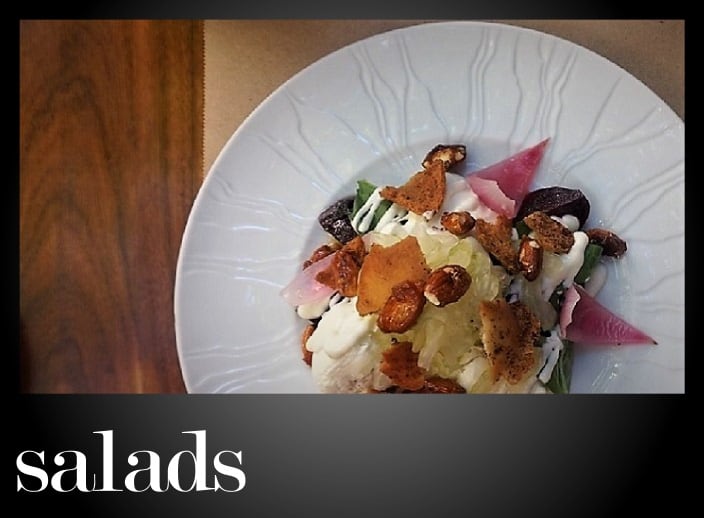Don Carlos
In a Nutshell
Don Carlos takes locally produced steaks, uses the Argentine names of the cuts of beef on the menu, and calls itself an Argentine steakhouse. The most Argentine thing about this restaurant is the lack of creative salads and side dishes. Everything about the experience is just barely better than average.
Read the full review
Don Carlos has been the “resident” steakhouse in the neighborhood surrounding Isidora Goyenechea for several years. This neighborhood, El Golf and Bosque Norte, are home to many of the city’s hotels, including both the Ritz Carlton and the W Hotel, and many, if not most of the patrons, are tourists or employees of international businesses that are temporarily living or working in Las Condes.
There is also a location in La Dehesa, but our evaluation is based on a visit to the Las Condes location.
The restaurant tags itself as an Argentine restaurant and the menu does have an Argentine feel to it with many of the Argentine steakhouse classics appearing on the Don Carlos menu, including a section on the menu for pastas in true Argentina style. I was told that although some of the beef was produced locally, that the Bife de Chorizo and the Ojo de Bife, was imported from Argentina.
The décor of the restaurant we visited also has an Argentine look and feel, albeit a somewhat upscale version of an Argentine parilla. It’s pleasant enough. Black and white checkered floors. Small black and white nostalgic photos hanging in a few places around the restaurant. Nice white tablecloths and cloth napkins (although my napkin was showing some signs of wear).
The restaurant has large glass windows spanning the entire front of the restaurant, bathing the restaurants with light during the afternoons. At night, the lighting is a bit bright. That’s about the only glaring (pardon the pun) deficiency in the ambience.
Diners are welcomed with a complimentary empanada after ordering, a practice you sometimes see in Argentine parillas. The menu is typically Argentine, except for the addition of a few creative appetizers, offered in addition to the familiar mainstays of an Argentine parilla, sausages and empanadas. I saw onion soup, some carpaccio options, a gazpacho, and some imported Ibérico ham and Grana Padano Parmesan cheese. You wouldn’t find those on the typical menu in Argentina.
But I opted for my usual. The ribeye steak (called an Ojo de Bife in Argentina and a Lomo Vetado in Chile), ordered medium-rare, was cooked correctly. The quality of steak was slightly better than acceptable. There was a heavy lineal grain in the beef. More than typical on premium-grade steaks. These steaks fell short of the quality I experienced at nearby Ox and Carnal Prime. But then again, they were significantly less expensive, despite the restaurant having similar décor and being in an equally upscale location.
In true Argentine parilla fashion, there was a dismal lack of salad and side-dish options, and the only option for dressing the salad being the typical oil and vinegar, albeit of higher quality than usual. The options at nearby Ox and Carnal Prime were way more creative. I opted for the best of several poor options, the traditional “ensalada Chilena”, a trio of tomatoes, onions and parsley, dressed with oil and vinegar sitting on the table.
Service was friendly and attentive, more so than usual in a Chilean restaurant. The waiters were clad in black slacks and starched white shirts.
Making a reservation online was easy through third-party reservation system, Restorando.com, with an immediate confirmation. And the menu is clearly laid out on the restaurant’s website.
This meal, although expensive by Santiago standards, wasn’t quite as expensive as the nearby competitors in Vitacura. The quality of the steak was, however, somewhat lower.
I think the issue I have with Don Carlos, is that in its attempt to copy an Argentine steakhouse, it’s done what most steakhouses in Argentina have done, it’s managed to stay myopically caught in the past. If the limited collection of salads offered at this restaurant were all delicious, I wouldn’t be complaining. But a pile of lettuce, tomatoes and onions hasn’t been considered a “salad” in most parts of the western world for close to five decades. Where’s the goat cheese and where are the walnuts, apple slices, and sunflower seeds? Instead, I have to choose between slices of celery, carrots and peas drenched in mayonnaise or lettuce, tomatoes and parsley? Does being traditional Argentine mean you can’t have one creative salad on the menu?











